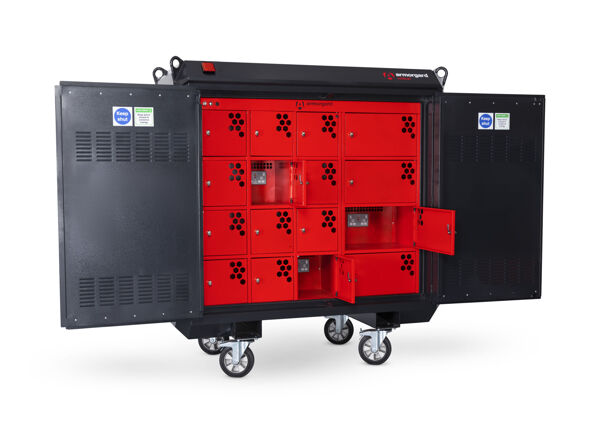
Lithium Fires: Understanding the Dangers, Finding the Solutions
Lithium-ion batteries: they’re all around us. These products can be found virtually anywhere, from the phones and tablets we use at home to the various pieces of equipment we use on busy construction sites. However, these essential products come with a warning: fire risks. In the latest learning resource from Bryson, we explore the dangers presented by lithium fires, and the steps you can take to prevent them.
An industry-wide adoption of lithium-ion batteries has seen industries change in some new and unexpected ways. Whilst they are increasingly becoming the power source of choice thanks to their high energy density and long lifespans, a huge surge in battery fires has highlighted the need for new safety measures.
Some of the stats we’ve found make for urgent reading for construction workers:
The number of lithium-ion battery fires in the UK increased by almost 150% from 2021-22 (Zurich)
The London Fire Brigade considers lithium-ion battery fires to be the fastest-growing fire risk (London Fire)
Lithium-ion battery fires currently make up 48% of all waste fires (Fire Protection Association, quoting the NFCC)
The dangers of lithium-ion batteries are clear. But how do these fires start in the first place?
Understanding the Causes of Lithium-Ion Fires
The vast majority of lithium-ion battery fires are caused by battery failure. Battery failure can be caused by a number of factors:- Incompatible equipment: A leading cause of lithium-ion battery failures centres around incompatible equipment. When batteries are charged using the wrong equipment, and when they are overcharged using this equipment, battery failure becomes highly likely.
- Cooling time: Ensuring appropriate cooling time is critical when it comes to preventing lithium-ion battery fires. By not allowing cooling off time or by charging multiple batteries at one time, the circuit becomes overloaded.
- Storage: Batteries often fail when stored in the wrong conditions, such as in poorly ventilated environments, close to water sources or close to sources of heat.
- Unregulated batteries: Today’s market is unfortunately awash with unregulated batteries that haven’t passed specific safety tests.
- Defects: Along with all of the reasons above, external damage to the battery or factory defects can lead to an increased risk of fires.
These versatile products present a significant fire risk when not used and charged appropriately. In the event that a battery fails, oxygen is released from the cathode and increases the speed of any resulting fire. The solution? Preventative measures using the right products. Keep reading for more advice.
How to Mitigate the Risk of Lithium Fires
When it comes to mitigating the risks of lithium battery fires, we recommend a two-pronged approach: the right preventative measures and the right preventative products. Let’s take a closer look…Selecting the Right Preventative Products
There are 3 essential products we recommend to mitigate the risk of a lithium-ion battery fire:
Ensuring the Right Preventative Measures
Mitigating the risk of lithium-ion battery fires must start with comprehensive preventive measures. Below are some of our top tips:- Cool storage: Ensure your batteries are stored at temperatures between 4-27°C.
- Safe storage: Ensure charging stations are on a firm, non-flammable surface. Keep them at least three feet away from combustible materials
- Storage time: When storing lithium batteries, ensure they are at a charge capacity of less than 30%. This reduces the risk of thermal runaway.
- Tackling fires: Ensure your facilities have the correct equipment to tackle a fire in the event of battery failure.
- Cover your terminals: Ensure your battery terminals are covered with insulating materials before disposing to avoid the consequences of unintended energy discharge.
- Use metal bins: Bins used for lithium-ion battery disposal should be metal and have metal lids.
If you’re a construction professional concerned by the risks of lithium-ion battery fires, be sure to include a mixture of measures, including the advice above with our recommended solutions.
Stand Up for Site Safety with Bryson
Here at Bryson, we’re passionate about connecting our customers with products that make their working day safer, easier and more efficient. To get started, browse our full range of products or...
Speak to One of our Experts Today




